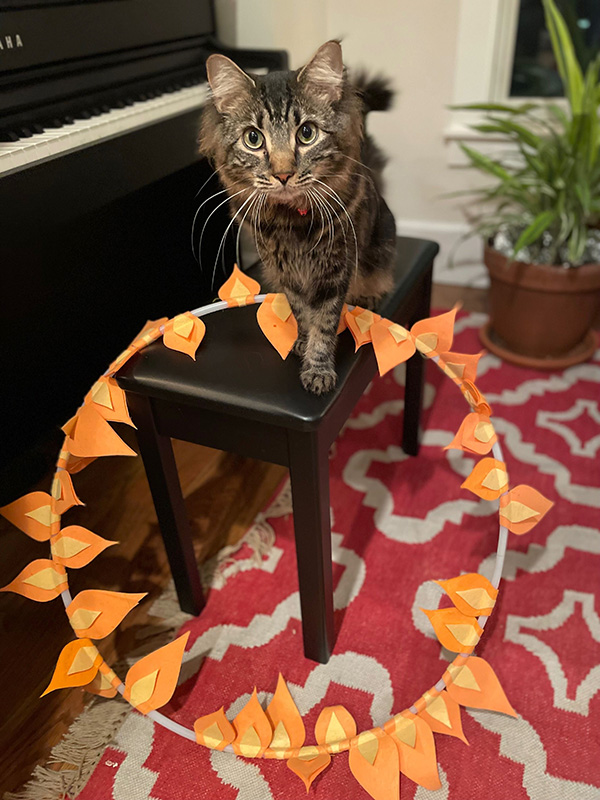Picture this: You run an animal shelter and a donor offers your org a huge gift to fund a program to train all the animals in your shelter to be circus animals…
Is this an example of mission creep? (Select one)
- Totally
- Kinda
Note that I didn’t offer you a “no” option. Why not? Because the problem about this whole mission creep thing lives in that one word: kinda.
Here’s what I mean…
WHAT IS MISSION CREEP?
Here’s a real-life example for you to chew on…
For a decade I ran an organization that works to ensure that the stories of LGBTQ lives were told fairly and accurately in the media. This mission was in the service of changing hearts and minds about LGBTQ people.
Early in my tenure, I decided to bring in/adopt/add a program that existed as a standalone organization. Its mission was to offer trainings – in particular for media entities – to help them navigate diversity in the workplace, specifically around LGBTQ issues.
Same question: Was this the move of a mission creep?
Same answer: The word “kinda” strikes again.
Mission creep occurs when an organization makes a decision to engage in programmatic work that is either not at all aligned with their mission or it is a serious stretch to justify that it is. The kind of stretch that makes someone close to your organization cock their head to one side and say “Huh!” or “Really” or “I’m not sure I get that” or “Are you kidding me right now? You want us to do WHAT?”
This is where “kinda” comes in.
FORMS OF MISSION CREEP
- Another entity is already kinda doing that thing.
- Nobody is doing that thing so you figure if not you then who?
- Taking public credit for the success of another organization so folks think you do that thing
FIVE CAUSES OF MISSION CREEP
- Lousy mission statement
When an organization can’t clearly fill in these blanks: “We do ____ through ___ in the service of _____,” and the mission statement is either too broad or incomprehensible, it provides no guardrails for what fits and what does not fit.
- Ego
The executive director approaches the job with a high degree of self-interest. There is what is perceived to be an opportunity to expand the footprint of the organization’s impact and/or opportunity to raise more money. The appeal is high and the board goes along.
- Bright Shiny Object Syndrome (BSOS)
Either the board or staff comes up with a fabulous new idea that “kinda” fits. Everyone gets super excited about it and doesn’t consider the implications on the infrastructure or on the ability of the organization to do the work that is clearly mission driven.
- The Work Is Being Done Poorly By A Colleague
Rather than collaborating with a colleague and working to ensure that the whole is greater than the sum of its parts, an organization just decides it can be more effective if it does this work. Donors are confused, tension is created between the two organizations and funding is split and impact can’t possibly be maximized.
- A Funder with Specific Interests
Here’s a story that’s as old as the hills. Organizations follow the money and not the north star set by a clear mission.
HOW TO PREVENT IT?
This post is starting to read like a pharmaceutical ad. Hmm. OK, here’s the antidote:
- Try a Mission Statement Sniff Test
Set aside (at least) 1 hour at a board meeting. Ask every board member to write down what they THINK the mission statement is. Have each read aloud. After you all stop laughing, talk about what the exercise means. Is there a focus to this mission statement? It should follow a format like this: We do X through Y in the service of Z. Under NO circumstances rewrite it as a group.Note: Side effects of a group rewrite include fatigue, high frustration, and board member exodus.
- Assess Your Current Programs
Relax, I’m not going to suggest the elimination of any current programs. I’m suggesting a way to figure that out for yourselves. Tidy up the conceptual focus of the mission statement and then list programs. Rate on a scale of 1 – 10.10 = it totally fits and if you rate it a 1 or 2, then you know you have a flag on the field.
Note: Side effects include a greater clarity about your current palette of program offerings.
- Rewrite Your Mission Statement with Your Staff
Maybe this is for internal use only (for now) — you have to promise that a teenager would understand it when it’s re-drafted. You also have to promise that you won’t re-draft with the explicit or implicit intention of making your 1s and 2s fit. Be honest with yourselves.
Note: Side effects include internal reckoning that there are programs that really need to be revisited or validation that you continue to maintain a laser focus on your mission.
- Develop Some Guiding Principles
Based on these two exercises, come back to the board and have a conversation that answers this question: What would have to be true for us to decide to embark on a new initiative or program? This conversation should result in some guardrails, some guiding principles. It will be at least an outline of a rubric by which new things will be evaluated. It is important that money/funding be only a small piece of these principles and not the driver. More on that in a minute.
Note: Side effects include your board gaining greater insight and greater facility in evaluating your programs and how / whether they align with what you exist to do.
- Create Messaging for the Funder Who Wants to Fund What Doesn’t Fit
I want you to have the messaging developed and at the ready and not have to contend with it on the fly. I want all of you — board and staff — to align around this messaging. The process outlined above is one of the single best ways to inoculate yourself against this. Your messaging of course begins with appreciation and then you can illustrate just how strategic your organization is and how engaged your board is by talking about the fact that you now have, thanks to the above steps, a rubric that you have developed in collaboration with the board to assess fit. And that you look forward to talking to the board about the idea through that lens.
Note: Side effects include lack of mumbling in front of donors when you don’t know what to say when you know that “NO” or “Are you kidding me right now?” are not options.
THE KEY MESSAGES
- Check your ego at the door
For executive directors, let your board into this conversation. It’s important and they can provide some cover for conversations with donors who want to fund something you feel does not fit.AND, if another organization is doing ‘the thing,’ can you please talk to them? Collaborate. The whole nonprofit sector needs to see more examples of organizations playing nicely in the sandbox.
- Inject more discipline into your program strategy to avoid BSOS
For executive directors: you need to be careful. You are prone to ‘bright shiny object syndrome.’ Let the board help you keep that in check.
- Pick It and Be It
It’s all about focus. Pick the thing you are best at and do that. Go back to the origin story of your organization. You’ll find the core right there. Don’t stray. That’s what the world wants. For you to pick your thing, invest in that, and do it as well as you possibly can.
So, let’s go back to our real-life scenario… should a media monitoring organization offer trainings to employees of media companies to create a greater sense of visibility and belonging for LGBTQ people?
Well, we did make the decision and acquired this small organization. The board pushed back a little but not a lot. The folks who thought it was a good idea felt the acquisition would bring us new donors — but we didn’t have enough conversation about fit.
Two years later, we engaged in the real conversation. The one that was definitely not as structured as what I have recommended (prescribed?). But the recommendation comes from that and many other lessons.
The answer to our assessment was that KINDA was even a stretch for this program and we made the tough decision to jettison the program. Looking back, I think we spent way too much time in every conversation talking about money and not mission. This is where organizations wind up in difficult terrain — something I hope you’ll consider as you make your own assessment.
Here’s hoping you find this prescription helpful. I suggest an annual program check-up just like this as part of your annual goal setting agenda. It could even be a simple dashboard that you revisit briefly.
Its greatest value may be the next time a donor offers to fund a program to train all the animals in your shelter to be circus performers.
That said, I have taught my rescue cat to sit, lay down, and jump through a hoop so maybe I should end here.

Want to learn from a growing community of nonprofit leaders and get exclusive access to content from a variety of experts? Click here to learn more about the Nonprofit Leadership Lab.



